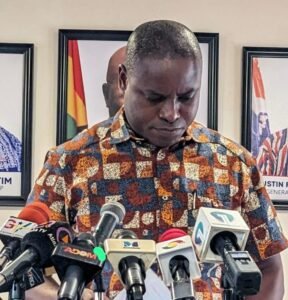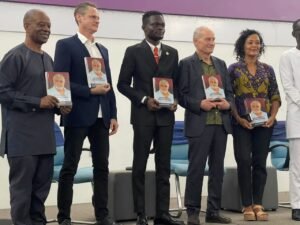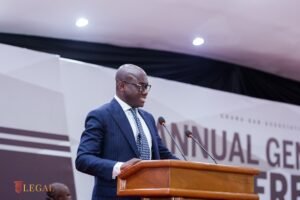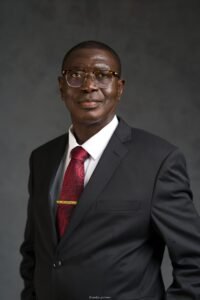
Ernest Kofi Owusu Bempah, convenor of Fixing the Country
Pro-government group Fixing the Country Movement has said that the successes chalked by the Akufo-Addo-led government in the area of infrastructure in the Volta Region is unprecedented in the fourth Republic.
“In a little over four years, the Nana Addo government has initiated over 17,000 infrastructure projects in the Volta region. As we speak, the Akufo-Addo led administration has completed 8,746 of these infrastructure projects and 8,588 ongoing.
“These infrastructure projects are in various sectors of the economy, including agriculture, education, energy, health, housing, industrial, market, railway, road safety, and security,” the group said.
Addressing a press conference in Accra, the convener of the group, Ernest Kofi Owusu Bempah, noted that “it is therefore misleading and very disingenuous for anyone to claim that the Akufo-Addo led government has abandoned the Volta Region in terms of development.”
Abandonment
He group’s comment comes at the back of claims by some opposition elements and chiefs in the Volta Region that the government has abandoned the region. For instance, Chief of Aflao Traditional Area, Torgbui Adzonugaga Amenya Fiti, has complained about ‘abandoned projects’ in his area, and has given the government a four-month ultimatum to complete an ongoing school project that he claimed had stalled in the area. The Minority Volta Caucus in Parliament is also reported to have made similar claims.
But, according to Mr Owusu Bempah, the “Volta Region remains the world Bank of the NDC and yet the 8years that the NDC was in power accounted for nothing with regards to development.”
E-blocks
Meanwhile, Mr Owusu-Bempah has described as misleading claims that the government has abandoned community senior high school projects inherited from the Mahama-led government.
He stated that statistics from the Ghana Education Service indicate that, as at the time the John Mahama-led government left office in January 7, 2017, only 29 out of 200 of the projects, known as E blocks, had been completed.
“Records obtained from the Ministry of Education indicates that the erstwhile Mahama government awarded a GHC 900 million contract to the construction companies to establish the E-block schools but failed to pay the contractors.
“It took the Akufo-Addo administration to pay off the debt to ensure none of the schools are abandoned but completed for all school children to benefit from the government’s free SHS programme,” he said.
He added that President Akufo-Addo, after clearing Mahama’s debt, had now initiated steps to continue the E-block project.
“According the 2021 Budget statement, President Akufo-Addo has completed 31 of the E-blocks under the Secondary Education Improvement Programme… bringing the total number of completed projects to 60 as of September 2020. It is important to note that all the 60 completed schools have been operationalized and are currently in use,” he stated.
“Per the Ghana Education service records, the remaining sixty-four (64) projects, have been categorized into three (3) groups. Category A includes twenty-one (21) structures at sixty percent (60%) and above completion.
“Category B consists of sixteen (16) structures which are between 25%- 60% completion. Category C consists of twenty-seven (27) terminated contracts which include projects that did not start and those that were at substructure level,” he added.
The erstwhile John Mahama administration, in 2012, announced its intention to build 200 Community Day Senior High Schools. Contracts for 124 of them were awarded, and it was expected that 101 of the schools whould be funded by the Government of Ghana (GoG) in two phases.
Phase I of the project consisted of 50 schools, and was commenced in March 2014, while Phase II, made up of 51, commenced in July 2015.
The World Bank funded the construction of an additional 23 schools under the Secondary Education Improvement Project (SEIP), which commenced in July 2015.
By 2017, only 29 of the schools had been completed and operationalized.








